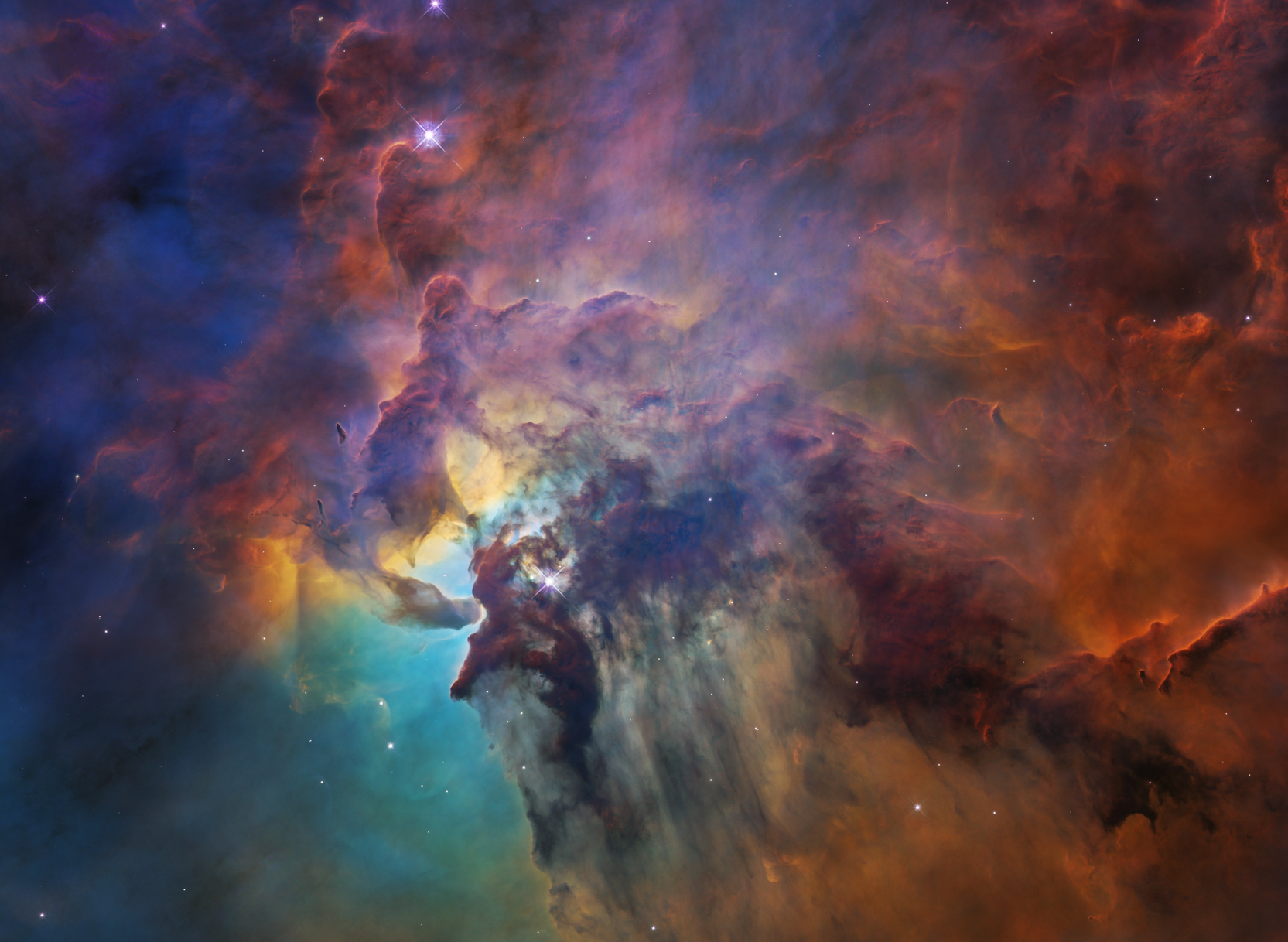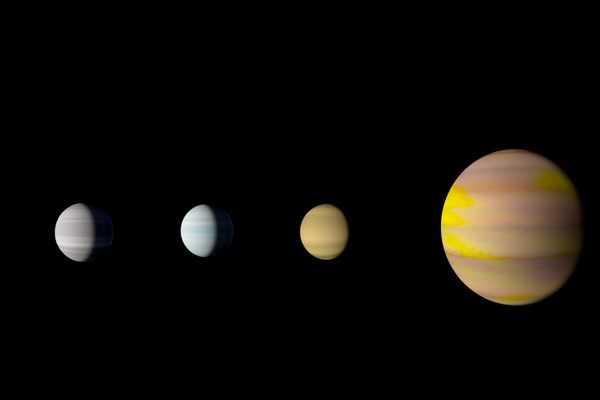Behold the Stormy Beauty of Stars Forming
New images from the Hubble Space Telescope capture majestic billows of gas and dust.

As a young priest and astronomer in 17th-century Sicily, Giovanni Battista Hodierna trained his gaze on the heavens. He was a disciple of Galileo, and peered through a 20-magnification telescope to track comets slashing across the sky. Sometime before 1654, he documented what is today called the Lagoon Nebula.
He didn’t see it like it appears in the image above, recently captured by the Hubble Space Telescope. Hodierna’s view was likely akin to what you would see if you looked skyward through binoculars before dawn and studied the area between the constellations Sagittarius and Scorpius: something like a smudge or mist pricked with a pin of light.
The nebula is a stellar nursery—the territory where stars emerge. It’s all a stormy business: Eddies of dust and scorching-hot gas swirl and swell in formations that look almost geological. Inside, a star dubbed Herschel 36 is growing, already 200,000 times brighter than our sun. NASA calls it a “monster young star,” but the majesty churning around it dims and softens with distance. The gulf is considerable: The nebula is 4,000 light years away. (Each light year is roughly 6 trillion miles.) In a newly released set of images, the Hubble Space Telescope foregrounds the billowing drama.

The images illustrate the fascinating fury of star formation. “When the Hubble looks at it, it’s an incredibly beautiful, twisting tornado-like structure of dark dust,” NASA astronomer Michelle Thaller told Gizmodo.
By using an infrared view, the researchers were able to capture a glimpse of the stars inside the dust and gas, too. It’s a compelling close-up—colorful, fearsome, and more than a little trippy.









Follow us on Twitter to get the latest on the world's hidden wonders.
Like us on Facebook to get the latest on the world's hidden wonders.
Follow us on Twitter Like us on Facebook